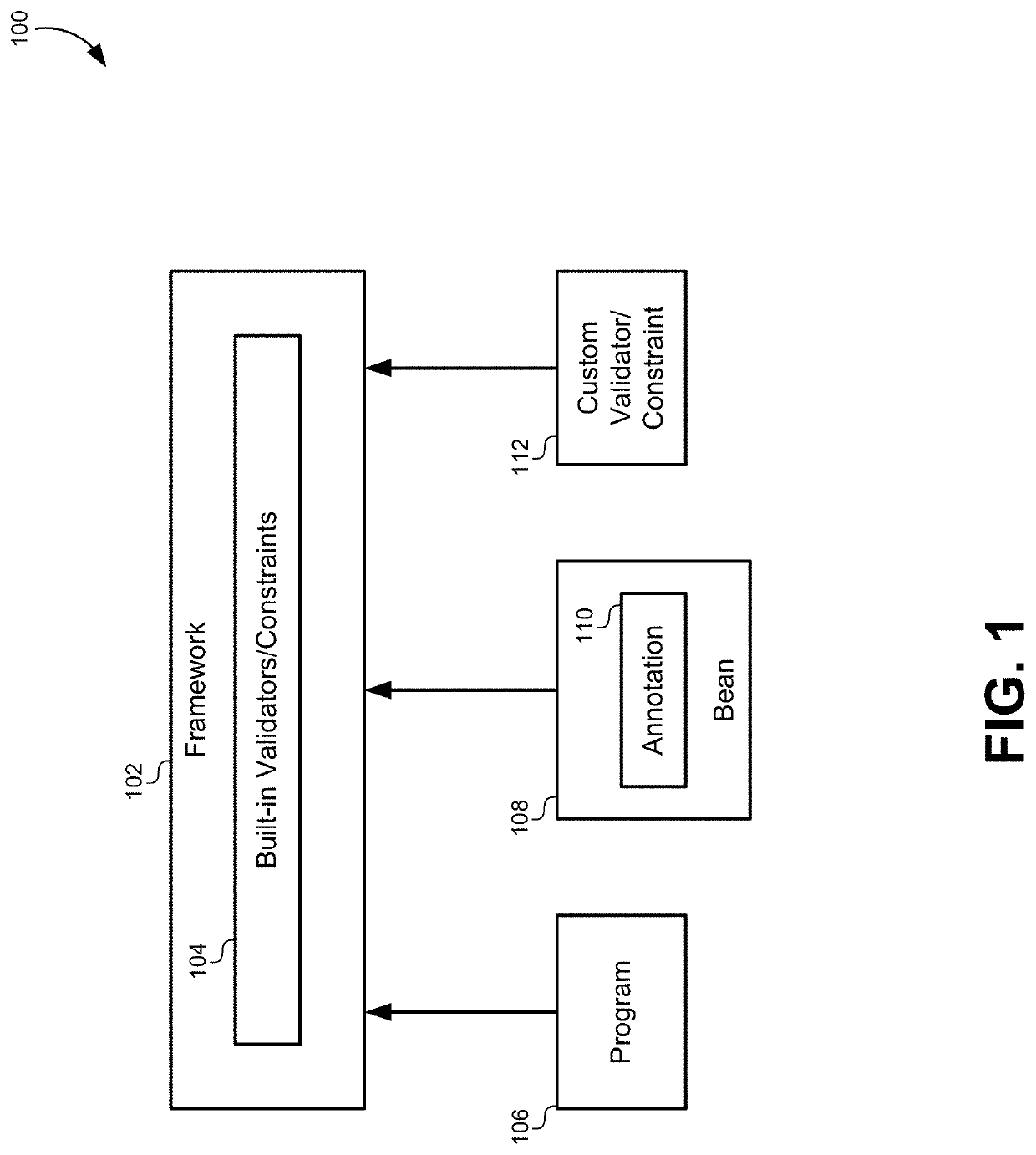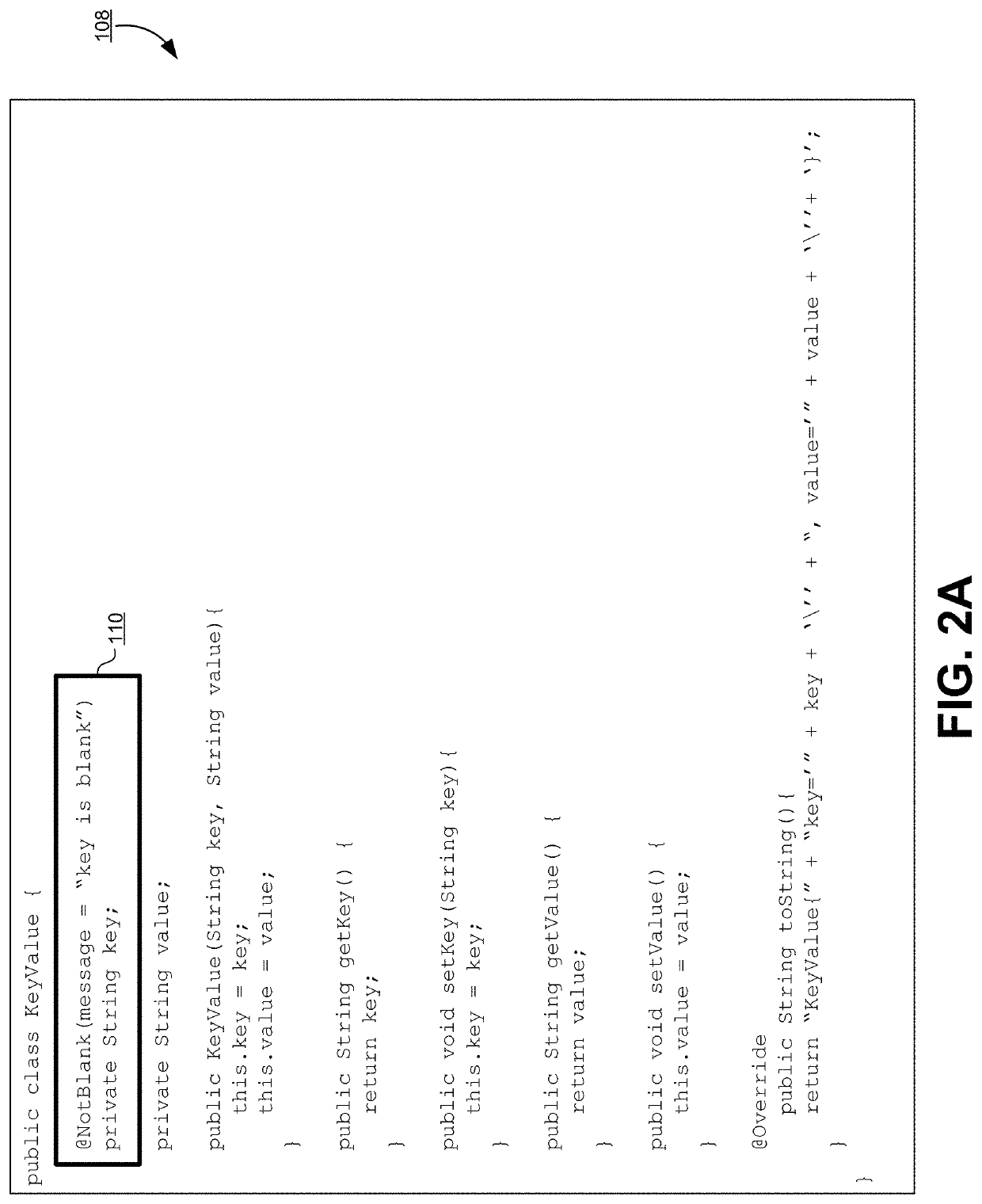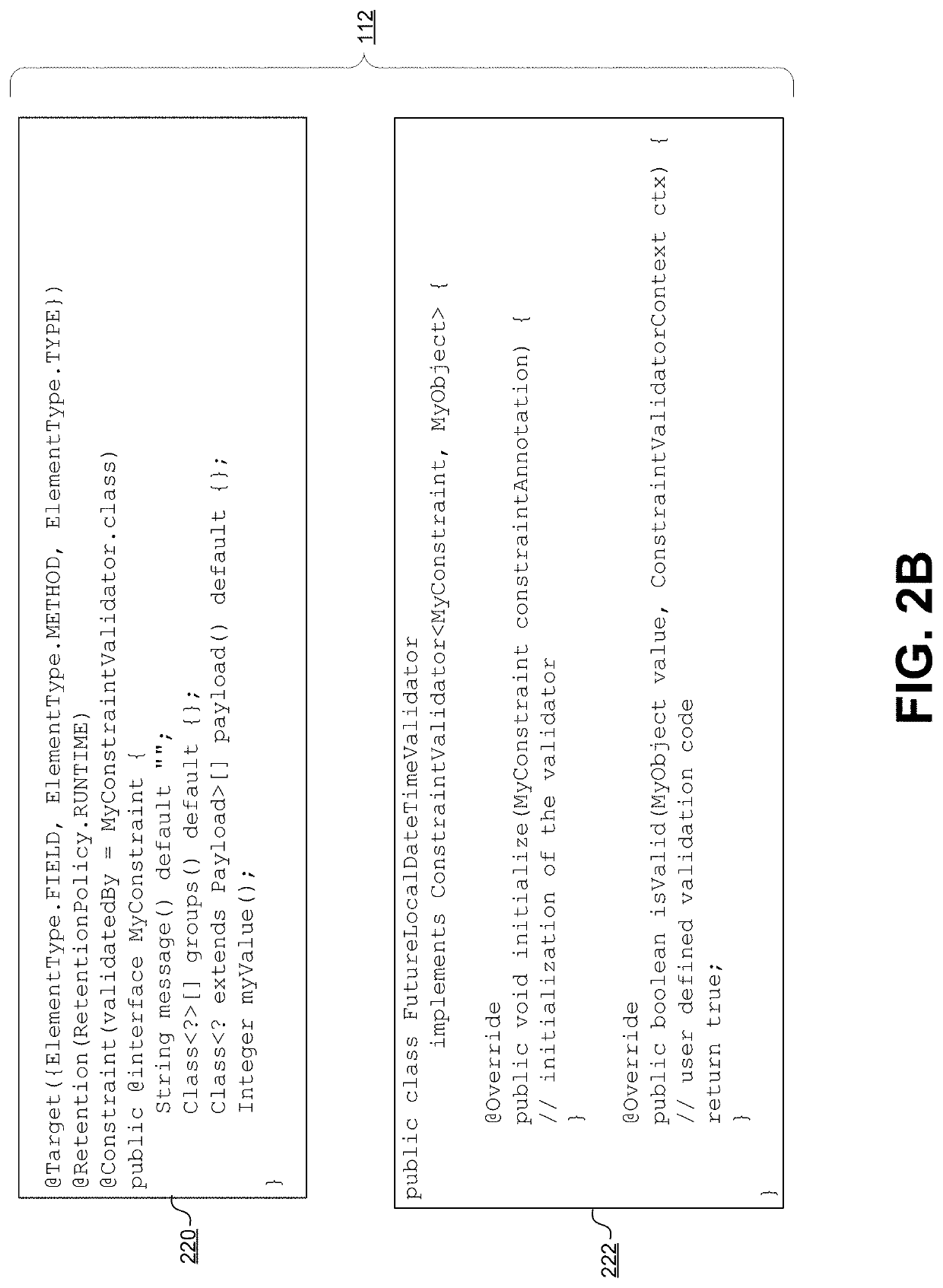Dynamic validation framework extension
a validation framework and dynamic validation technology, applied in the field of dynamic validation framework extension, can solve problems such as framework reporting a constraint violation, and achieve the effect of easy addition of new dependencies
- Summary
- Abstract
- Description
- Claims
- Application Information
AI Technical Summary
Benefits of technology
Problems solved by technology
Method used
Image
Examples
Embodiment Construction
[0028]In the JAVA programming language, various standards (JSR 380, JSR 349, JSR 303, etc.) describe a framework that may be used for the validation of attributes within JAVA beans. Bean validation is commonly used when data flows from a presentation layer to a persistence layer. Before this framework, users typically had to duplicate their validation code in each layer of their application. The validation framework allows users to perform a validation using a single mechanism via metadata that is added to domains or classes. The metadata may include constraints that are added via XML, descriptors. For example, the default metadata source for a JAVA class may include a JAVA annotation that is added to a target. The target data may then be validated against the constraint referenced by the annotation at runtime.
[0029]A constraint generally is comprised of two separate parts. A first part of the constraint includes a constraint annotation, which includes an annotation that may be adde...
PUM
 Login to View More
Login to View More Abstract
Description
Claims
Application Information
 Login to View More
Login to View More - R&D
- Intellectual Property
- Life Sciences
- Materials
- Tech Scout
- Unparalleled Data Quality
- Higher Quality Content
- 60% Fewer Hallucinations
Browse by: Latest US Patents, China's latest patents, Technical Efficacy Thesaurus, Application Domain, Technology Topic, Popular Technical Reports.
© 2025 PatSnap. All rights reserved.Legal|Privacy policy|Modern Slavery Act Transparency Statement|Sitemap|About US| Contact US: help@patsnap.com



